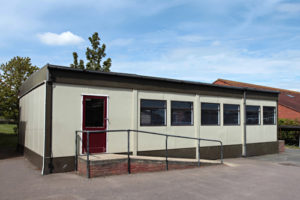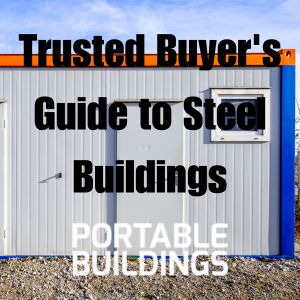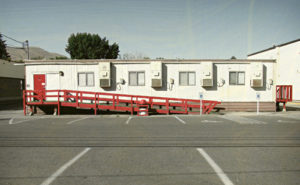
When it comes to setting up portable offices on job sites or remote properties, a lot of people focus on square footage, delivery timelines, or layout design—and rightfully so. But one aspect that often gets overlooked until it’s too late is ADA compliance.
I’ve been in the prefab office business here in Texas for over a decade, and I can tell you from firsthand experience: if your portable office isn’t accessible, you’re not only missing the mark on inclusivity—you’re also opening yourself up to legal risks and costly redesigns.
Whether you’re working on a construction site, managing a temporary school facility, or running field operations, ensuring that your portable office is ADA compliant isn’t optional. It’s a necessity. I’m here today writing for Metal Portable Buildings to help reveal what you need to know to do it right the first time.
What Is ADA Compliance?
The Americans with Disabilities Act (ADA) sets national standards to ensure that buildings and facilities are accessible to people with disabilities. That includes temporary and portable structures—yes, even those used on short-term job sites.
To meet ADA guidelines, your portable office must be equipped to accommodate individuals using wheelchairs, mobility aids, or other assistive devices. This includes not only the entry and exit points but also internal layout and key features like restrooms and doorways.

Why ADA Compliance Matters for Portable Offices
I’ve seen too many project managers think, “We’re only using the office trailer for six months—it doesn’t need to be fully compliant.” Unfortunately, that’s a fast track to an ADA violation, especially if you’re working on publicly funded projects or in industries with strict safety and accessibility oversight.
Here’s why ADA-compliant portable offices should be part of your standard planning process:
Legal Requirements
Federal law mandates that temporary job site offices used for employee access must comply with ADA rules. Ignoring this can result in complaints, fines, and forced modifications.
Public Project Compliance
If you’re working on government contracts or publicly funded projects, ADA compliance is non-negotiable. Many municipalities won’t even allow you to operate on-site without proof of accessibility.
Inclusive Access
Beyond legalities, it’s about doing what’s right. Your team, clients, and visitors should all be able to access your facilities safely and comfortably, regardless of mobility.
Key Features of ADA-Compliant Portable Offices
Here’s what we include or recommend for all our ADA-ready units:
Accessible Ramps
The most recognizable feature, ADA ramps must meet the following specs:
-
Minimum 36” wide
-
Maximum 1:12 slope (1 foot of ramp for every inch of rise)
-
Handrails on both sides if the rise exceeds 6 inches
-
Non-slip surface for safety in all weather conditions
We always design ramps that are not only compliant but built for long-term stability, especially in muddy or uneven job site terrain.

Wide Entry Doors
Entryways should be at least 32 inches wide when the door is open at 90 degrees. Door hardware must be operable with one hand and without tight grasping—lever handles work best.
Interior Space for Maneuvering
ADA guidelines require a 5-foot turning radius inside rooms and around furniture for wheelchair users. That means no tight corridors or bulky desks blocking the way.
Accessible Restrooms
If your portable office includes a restroom, it must:
-
Be at least 60” x 56” clear inside
-
Include grab bars around the toilet
-
Have accessible sinks, mirrors, and hand dryers or paper towel dispensers
Not every job site needs a restroom, but if you include one, it needs to meet the same standards as a permanent facility.
Door Thresholds and Flooring
Transitions between surfaces must be smooth, with thresholds no higher than 1/2 inch. We use slip-resistant, low-pile commercial flooring that works well for wheelchairs and is easy to maintain.

Common Misconceptions About ADA Portable Offices
Let me clear up a few myths I hear all the time:
❌ “ADA trailers are too expensive.”
✔️ They don’t have to be. With proper planning, the cost difference between standard and ADA-compliant setups is relatively small—especially compared to the cost of noncompliance.
❌ “My team doesn’t need accessibility.”
✔️ You might not need it today, but laws apply regardless of your current staff. Plus, your site might host inspectors, vendors, or clients who do.
❌ “It’s a temporary office—ADA doesn’t apply.”
✔️ It does. The ADA includes temporary, portable, and modular structures used by employees, visitors, or the public.
How to Get an ADA-Compliant Portable Office
If you’re looking for a compliant solution, here’s the process I recommend:
-
Tell your provider you need ADA access.
Not all portable offices are automatically compliant, so be upfront about your needs from day one. -
Verify ramp and layout specs.
Ask for drawings or measurements to confirm the unit meets code. Reputable providers (like our team) will provide you with this info upfront. -
Ask about state or local requirements.
Some municipalities go beyond federal ADA guidelines. We always check local codes when setting up in a new area—and you should too. -
Choose the right ramp setup.
Not all sites are level. Make sure your ramp is built with site conditions in mind—especially if you’re on gravel, clay, or uneven terrain.

Final Thoughts: Do It Right, Do It Once
I’ve seen the headaches that come with last-minute accessibility add-ons—rushed ramp installs, layout redesigns, even failed inspections. It’s always easier (and cheaper) to plan for ADA from the start.
Whether you’re overseeing a construction project, managing field operations, or setting up a portable office for emergency response, making your space accessible isn’t just a regulation—it’s a reflection of your professionalism.
Written by James Holloway, owner of a Texas-based prefab office building company. I’m a graduate of Texas A&M University with a degree in Construction Engineering and have spent the last 12 years helping businesses across the state create efficient, compliant, and cost-effective portable office solutions.


